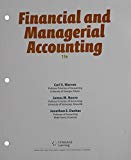
a.1.
Bonds: Bonds are long-term promissory notes that are represented by a company while borrowing money from investors to raise fund for financing the operations.
Bonds Payable: Bonds payable are referred to long-term debts of the business, issued to various lenders known as bondholders, generally in multiples of $1,000 per bond, to raise fund for financing the operations.
Discount on bonds payable: It occurs when the bonds are issued at a low price than the face value.
To Prepare:
a.1.
Explanation of Solution
Prepare journal entry for issuance of bonds payable.
| Date | Account Title and Explanation | Post Ref | Debit ($) | Credit ($) | |||
| Cash | 17,138,298 | ||||||
| Discount on Bonds Payable (1) | 1,361,702 | ||||||
| Bonds Payable | 18,500,00 | ||||||
| (To record issuance of bonds payable at discount) | |||||||
Table (1)
Working note:
Calculate discount on bonds payable.
- Cash is an asset and it is increased. So, debit it by $17,138,298.
- Discount on Bonds Payable is an adjunct liability account and it is decreased. So, debit it by $1,361,702.
- Bonds payable is a liability and it is increased. So, credit it by $18,500,000.
2.
To Prepare: Journal entry to record first interest payment and amortization of discount on bonds.
2.
Explanation of Solution
Prepare journal entry for first interest payment and amortization of discount on bonds.
| Date | Account Title and Explanation | Post Ref | Debit ($) | Credit ($) | |||
| Interest Expense (4) | 1,061,170 | ||||||
| Discount on Bonds Payable (2) | 136,170 | ||||||
| Cash (3) | 925,000 | ||||||
| (To record semiannual payment of interest and amortization of discount on bonds) | |||||||
Table (2)
Working notes:
Calculate discount on bonds payable semiannually.
Calculate the amount of cash interest.
Calculate the interest expense on the bond.
- Interest expense is an expense and it decreases the equity value. So, debit it by $1,061,170.
- Discount on Bonds Payable is an adjunct liability account and it is increased. So, credit it by $136,170.
- Cash is an asset and it is decreased. So, credit it by $925,000.
3.
To Prepare: Journal entry to record second interest payment and amortization of discount on bonds.
3.
Explanation of Solution
Prepare journal entry for second interest payment and amortization of discount on bonds.
| Date | Account Title and Explanation | Post Ref | Debit ($) | Credit ($) | |||
| Interest Expense (7) | 1,061,170 | ||||||
| Discount on Bonds Payable (5) | 136,170 | ||||||
| Cash (6) | 925,000 | ||||||
| (To record semiannual payment of interest and amortization of discount on bonds) | |||||||
Table (3)
Working notes:
Calculate discount on bonds payable semiannually.
Calculate the amount of cash interest.
Calculate the interest expense on the bond.
- Interest expense is an expense and it decreases the equity value. So, debit it by $1,061,170.
- Discount on Bonds Payable is an adjunct liability account and it is increased. So, credit it by $136,170.
- Cash is an asset and it is decreased. So, credit it by $925,000.
b.
The amount of bond interest expense for first year.
b.
Explanation of Solution
Determine the amount of bonds interest expense for first year.
c.
To Explain: The reason why the company was able to issue the bonds for $17,138,298 rather than $18,500,000.
c.
Explanation of Solution
Company P was able to issue the bonds for $17,138,298 rather than $18,500,000 because of the following reasons:
- The market interest rate (12%) of bonds was higher than the stated interest rate of 10%.
- The bonds were less valuable in market and investors were ready to pay less than the maturity
value of bonds
Want to see more full solutions like this?
Chapter 12 Solutions
Bundle: Financial & Managerial Accounting, Loose-Leaf Version, 13th + CengageNOWv2, 2 terms (12 months) Printed Access Card + Hydro Paddle Boards ... 2 terms (12 months) Printed Access Card
- Edward Inc. issued bonds with a $500,000 face value, 10% interest rate, and a 4-year term on July 1, 2018 and received $480,000. Interest is payable semiannually. The discount is amortized using the straight-line method. Prepare journal entries for the following transactions. A. July 1, 2018: entry to record issuing the bonds B. Dec. 31, 2018: entry to record payment of interest to bondholders C. Dec. 31, 2018: entry to record amortization of discountarrow_forwardDixon Inc. issued bonds with a $500,000 face value, 10% interest rate, and a 4-year term on July 1, 2018 and received $480,000. Interest is payable annually. The discount is amortized using the straight-line method. Prepare journal entries for the following transactions. A. July 1, 2018: entry to record issuing the bonds B. June 30, 2019: entry to record payment of interest to bondholders C. June 30, 2019: entry to record amortization of discount D. June 30, 2020: entry to record payment of interest to bondholders E. June 30, 2020: entry to record amortization of discountarrow_forward
- Principles of Accounting Volume 1AccountingISBN:9781947172685Author:OpenStaxPublisher:OpenStax College
 Excel Applications for Accounting PrinciplesAccountingISBN:9781111581565Author:Gaylord N. SmithPublisher:Cengage Learning
Excel Applications for Accounting PrinciplesAccountingISBN:9781111581565Author:Gaylord N. SmithPublisher:Cengage Learning College Accounting, Chapters 1-27AccountingISBN:9781337794756Author:HEINTZ, James A.Publisher:Cengage Learning,
College Accounting, Chapters 1-27AccountingISBN:9781337794756Author:HEINTZ, James A.Publisher:Cengage Learning,


